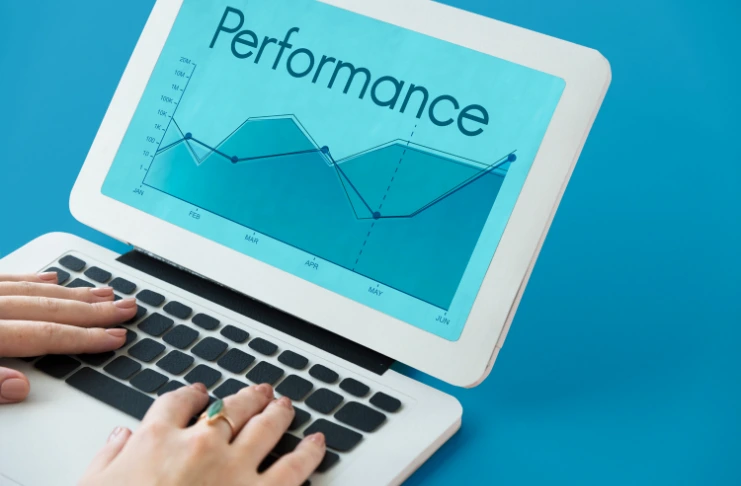Understanding metrics of restaurant staff’s performance is essential for optimizing day-to-day operations and maintaining profitability. These metrics help identify how efficiently your team works and where improvements are needed. Implementing clear KPI for restaurant employees—such as labor cost percentage, gross profit employee turnover rate, and order accuracy—can provide valuable insight into productivity and performance levels.
Knowing how to measure restaurant staff performance goes beyond observation. Tools like POS systems, restaurant KPIs, time-tracking software, and customer feedback help restaurant managers assess speed of service, attendance, and training completion. Regular evaluations and benchmarking against industry standards allow for smarter scheduling, better training programs, and stronger team engagement.
Restaurant employee productivity tracking is most effective when combined with clear expectations, ongoing coaching, and incentives. Creating a culture of accountability while recognizing menu item profitability and top performers ensures long-term operational success.
By focusing on the right metrics and tools, restaurant managers can improve service quality, increase restaurant’s total revenue, and reduce costly inefficiencies. Start using performance KPIs to empower your staff and elevate the customer experience and enhance customer loyalty.
Understanding Staff Performance Metrics in a Restaurant Business

Staff performance metrics are essential tools for evaluating employee contributions across all areas of your operation. These measurable data points cover everything from cost of goods sold, service accuracy, and table turnover to upselling rates and labor cost efficiency.
By tracking these restaurant metrics, restaurant managers can identify strengths and weaknesses in staff output, ensuring alignment with your restaurant’s service standards and business goals.
Choosing the right KPI for restaurant employees is key. Important KPIs include:
- Attendance reliability
- Sales per labor hour
- Average order value
These KPIs help paint a clear picture of your team’s overall productivity.
But these numbers are more than just stats. They reveal trends in customer interactions, highlight training needs, and measure how staff affect the guest experience.
To make tracking easy, use restaurant employee productivity tracking tools such as:
- POS analytics
- Time-tracking software
- Employee performance dashboards
These tools simplify measuring restaurant staff performance by collecting and analyzing data in real time.
Consistently applying these performance metrics enables restaurant owners to make smarter decisions about scheduling, employee engagement, and improving customer service quality.
A well-rounded performance measurement system boosts team motivation and accountability while maintaining high operational standards.
In the end, effective staff performance tracking doesn’t just enhance workflow — it also drives profitability.
Leveraging the right KPIs and modern productivity tracking tools ensures your restaurant stays competitive and successful in today’s market.
Why Performance Metrics Matter

In today’s competitive hospitality landscape, your staff directly shapes both the guest experience and your bottom line. From the first greeting to the final bite, their performance can make or break a customer’s impression.
That’s why applying robust staff performance metrics is essential—not only to assess productivity but to improve it at every level.
By implementing clear KPI for restaurant employees, restaurant leaders gain valuable insights to manage fixed costs, labor more effectively, reduce errors, and build stronger teams.
Whether it’s tracking wait times, upselling frequency, or check averages, restaurant employee productivity tracking enables smarter, data-driven decisions. These restaurant metrics empower managers to:
- Recognize and reward top performers
- Deliver tailored coaching based on real performance
- Create a high-performing, motivated team environment
Knowing how to measure restaurant staff performance isn’t just about evaluation—it’s a growth strategy.
With the right metrics in place, restaurants can identify inefficiencies, monitor progress, and help staff reach their potential.
This results in stronger service, higher guest retention, and better revenue outcomes. Investing in new customers is between 5 and 25 times more expensive than retaining existing ones.
A structured performance tracking system allows you to:
- Identify high and low performers with clarity
- Make precise, data-backed staffing decisions
- Customize training to close actual performance gaps
- Promote a culture of recognition and accountability
- Reduce turnover and cut hiring/training costs
When you align your goals with clear KPIs and use the right tools for restaurant employee productivity tracking, you’re setting your team—and your business—up for long-term success.
Key Metrics in a Restaurant Business

Server Performance KPIs
Monitoring restaurant metrics is key to boosting service quality and efficiency. By tracking the right KPI for restaurant employees, including variable costs, managers can improve productivity and address performance gaps quickly.
1. Sales Per Server
This metric assesses the total sales generated by each server during their shifts, providing insight into individual revenue contributions.
Regularly tracking this performance metric helps in recognizing top performers and identifying those who may benefit from additional training.
2. Average Check Size
Average check size evaluates how effectively servers upsell and suggest additional items, enhancing the dining experience and increasing revenue. Tips for improvement:
- Train servers on comprehensive menu knowledge and complementary pairings.
- Implement suggestive selling techniques.
- Create incentive programs to encourage higher check averages.
Enhancing this KPI for restaurant employees, including gross profit margin, can lead to increased profitability and customer satisfaction.
3. Table Turnover Rate
Table turnover rate measures how efficiently servers manage their sections, directly impacting the restaurant’s capacity to serve more customers during peak hours.
Understanding and optimizing this performance metric, including the inventory turnover ratio, can lead to improved seating efficiency and increased revenue potential.
4. Customer Satisfaction Scores
Customer satisfaction scores, along with customer retention rate, reveal how well servers meet guest expectations and highlight areas for service improvement. Measurement methods:
- Post-dining surveys (paper or digital)
- Online review analysis
- Mystery shopping programs
- Net Promoter Score (NPS)
Monitoring this metric ensures that customer expectations are met and exceeded, fostering loyalty and positive reviews.
By systematically tracking these restaurant employee productivity tracking metrics, managers can make informed decisions to enhance service quality, employee performance, and overall restaurant success.
Kitchen Staff Performance Metrics
Tracking the right kitchen KPIs is essential to improve restaurant efficiency, reduce food waste, and deliver a consistent dining experience your guests will love.
1. Food Preparation Time
This metric tracks how quickly your kitchen staff prepares meals from the time an order is placed to when it’s ready to be served. Shorter prep times directly impact total revenue, meaning faster service and happier customers.
Using a kitchen display system (KDS) can help automate prep time tracking and reduce ticket delays.
2. Order Accuracy
Order accuracy reflects how often the kitchen delivers exactly what was requested, without mistakes or substitutions. High accuracy reduces waste, increases efficiency, and improves guest satisfaction.
Use your POS system to standardize recipes and streamline communication between front-of-house and back-of-house teams for greater order accuracy.
3. Food Cost Percentage
This KPI reveals how well your kitchen manages ingredient usage, portion control, and waste. Lower food cost percentages indicate higher profitability.
Conduct weekly inventory checks and compare actual versus theoretical food costs to pinpoint shrinkage and reduce waste.
4. Plate Presentation Consistency
Consistency in how dishes look directly impacts customer experience and reinforces your brand. This metric evaluates how reliably your team meets presentation standards. Measurement methods:
- Regular visual inspections
- Photographic documentation
- Chef evaluation scores
- Customer feedback helps learn customer preferences
Create plating guides for each dish and conduct random quality audits during service hours.
By consistently monitoring these key kitchen staff metrics, restaurants can boost back-of-house productivity, ensure food quality, and maintain high operational standards.
Bar Staff Performance Metrics
Monitoring staff’s performance metrics at the bar is essential for boosting beverage profitability and ensuring smooth operations. Below are three important KPIs for restaurant employees behind the bar and how to measure them effectively:
1. Pour Cost
This essential KPI evaluates how efficiently bartenders turn inventory into revenue. A lower pour cost indicates better control over portioning and waste.
2. Drinks Per Hour
This metric helps you gauge bartender productivity during service. It’s a valuable indicator when focusing on tracking restaurant employees’ productivity. Tips for improvement:
- Streamlining bar layout
- Training on batching techniques
- Standardizing drink recipes
- Preparing ahead for rush periods
3. Upselling Performance
This KPI tracks how effectively your bar staff promotes premium drinks or cocktails, directly boosting average ticket value.
Use this insight to train your team in suggestive selling and highlight signature items that improve your margins.
Tracking these KPI for restaurant employees not only improves performance behind the bar but also supports long-term business growth. If you’re focused on how to measure restaurant staff performance in real-time, these KPIs offer a solid starting point.
How to Implement Staff Performance Tracking

To effectively boost service quality and operational efficiency, restaurants must focus on actionable performance metrics—from tracking punctuality to measuring productivity and customer feedback.
POS System Analytics
Using a modern POS system is one of the most effective ways to implement these restaurant metrics and drive operational improvement.
Key Benefits of POS-Based Performance Tracking
- Tracks essential KPI for restaurant employees like sales per shift, order accuracy, and check averages
- Supports restaurant employee productivity tracking with real-time data
- Helps identify top performers and training opportunities
- Aligns labor costs with output for smarter scheduling
- Improves accountability through transparent metrics
How to Measure Restaurant Staff Performance Using POS Analytics
- Set measurable KPIs (e.g., sales per labor hour, upselling rates)
- Monitor and compare shift-based performance trends
- Review data weekly to spot issues early and reward improvements
- Use insights to refine training and coaching
- Benchmark performance against your goals for better consistency
Kitchen Display Systems (KDS)
Implementing a Kitchen Display System (KDS) is a highly effective way to enhance performance metrics by digitizing kitchen operations and improving back-of-house efficiency. Key benefits of using a KDS:
- Track prep times and order status live to optimize the speed of service.
- Minimize errors by eliminating miscommunication between front and back of house, and boosting restaurant employee productivity tracking.
- Reduce wait times and ensure timely service during peak hours.
- Analyze trends in prep times, errors, and kitchen throughput to improve KPI for restaurant employees over time.
By integrating a Kitchen Display System into your POS setup, you not only streamline kitchen operations but also gain powerful insights into menu items to measure restaurant staff performance and boost overall productivity.
Time and Attendance Software
Modern time-tracking tools play a vital role in metrics by offering visibility into attendance, punctuality, and labor efficiency—crucial elements of restaurant employee productivity tracking. Key features include:
- Digital clock-in/out to monitor real-time attendance
- Shift swapping for flexible scheduling
- Labor cost analysis to optimize staffing levels
- Built-in scheduling to avoid over- or under-staffing
- Mobile access for on-the-go management
Using these tools, restaurant managers can accurately track KPI for restaurant employees and make data-driven staffing decisions.
Customer Feedback Systems
Implementing structured customer feedback systems is a powerful way to assess performance metrics while enhancing guest satisfaction and loyalty. Effective feedback collection methods:
- Digital survey tools integrated with POS
- QR code-based feedback on receipts or tables
- Automated email follow-ups after visits
- Monitoring reviews on platforms like Google and TripAdvisor
- Social media sentiment tracking
These channels support restaurant employee productivity tracking and help refine the KPI for restaurant employees by aligning staff behavior with guest expectations.
By leveraging these tools and systems, restaurants can implement smarter KPI for restaurant employees, enhance restaurant employee productivity tracking, and create a high-performing team that consistently delivers exceptional service.
Best Practices for Evaluating Restaurant Staff Performance

Effective evaluation is essential to improving performance metrics and driving overall team productivity.
INDUSTRY INSIGHT
| 87% of consumers read online reviews for local businesses, underscoring how critical customer perception is in driving business success.To positively influence these public reviews, it’s essential to regularly assess your own staff’s performance. Monitoring service quality, identifying gaps, and offering constructive feedback help ensure that every customer interaction is positive. This internal accountability not only improves team performance but also translates into better customer experiences—directly impacting the reviews that shape your brand’s reputation. |
1. Set Clear Performance Expectations
Clear expectations are the foundation for accurate restaurant employee productivity tracking and fair performance evaluation. Implementation tips:
- Create detailed job descriptions with measurable performance metrics.
- Establish realistic benchmarks aligned with industry standards.
- Communicate expectations clearly during onboarding and training.
- Provide visual aids and reference materials for staff clarity.
Clear and measurable expectations empower your team to meet and exceed key KPI for restaurant employees, driving consistent performance improvements.
2. Conduct Regular Performance Reviews
Consistent reviews are a proven strategy for improving the effectiveness of measuring restaurant staff performance over time. Effective review structure:
- Hold monthly one-on-one meetings to provide ongoing feedback.
- Conduct quarterly assessments to track progress.
- Perform annual comprehensive evaluations for career growth.
- Deliver immediate feedback to address issues or praise excellence.
Regular performance reviews enable proactive management of restaurant employee productivity tracking, reducing turnover and enhancing overall staff effectiveness.
3. Implement Peer Recognition Programs
Peer recognition is an impactful tool to enhance staff performance metrics by motivating employees through positive reinforcement. Program ideas:
- Employee of the month awards to celebrate top performers.
- Peer nomination systems encouraging team acknowledgment.
- Team achievement recognition for collaborative success.
- Social media spotlights to highlight staff excellence publicly.
Peer recognition programs not only motivate your team but also strengthen your restaurant’s culture, improving vital performance metrics.
4. Use Mystery Shoppers
Mystery shopping provides unbiased insights crucial for accurate restaurant employee productivity tracking and customer service improvement. Focus areas for mystery shoppers:
- Greeting and service timing accuracy.
- Staff menu knowledge and upselling ability.
- Problem-solving skills and overall hospitality.
Mystery shoppers provide actionable insights that help refine your KPI for restaurant employees, elevating service quality and customer satisfaction.
Implementing these best practices ensures you accurately measure and boost metrics, leading to stronger team productivity and business growth.
Overcoming Common Challenges in Staff Performance Measurement

Effectively measuring metrics can be challenging, but addressing common obstacles ensures accurate insights and sustained improvement.
1. Balancing Quantity vs. Quality Metrics
While sales and other quantitative KPIs matter, balancing them with qualitative factors like teamwork and customer satisfaction is key to holistic restaurant employee productivity tracking.
A balanced scorecard approach helps align your KPI for restaurant employees with both measurable results and service quality, supporting long-term success.
2. Managing Staff Resistance to Tracking
Staff may resist performance monitoring if it feels punitive or invasive, affecting their engagement and productivity.
Some possible solutions to this are:
- Emphasize development rather than punishment
- Demonstrate how metrics help employees earn more
- Share success stories of improved performance
- Include staff input when developing metrics
By fostering transparency and focusing on growth, you can turn resistance into motivation and improve how to measure restaurant staff performance positively.
3. Avoiding Metric Manipulation
Focusing only on specific metrics can lead to skewed performance and overlooked responsibilities.
Comprehensive, rotating KPIs ensure a well-rounded evaluation and prevent narrow focus, strengthening your overall staff performance metrics.
4. Managing Seasonal Fluctuations
Seasonal variations in customer traffic can distort performance data if not adjusted properly.
Using historical and year-over-year data to set expectations allows for more accurate restaurant employee productivity tracking and fair performance assessments.
Using Performance Metrics to Drive Improvement

Leveraging performance metrics effectively can transform your restaurant’s operations by driving targeted improvements and boosting overall productivity.
1. Data-Driven Training Programs
Use performance data to pinpoint skill gaps and design focused training that accelerates staff development and enhances service quality. Implementation tips:
- Analyze trends in performance data to identify areas needing improvement
- Develop modular, targeted training sessions
- Measure employee performance before and after training
- Continuously adjust training based on results
Data-driven training ensures your KPI for restaurant employees align with real needs, speeding up learning curves and improving overall restaurant employee productivity tracking.
2. Performance-Based Incentives
Motivate staff by linking rewards directly to measurable performance metrics, encouraging excellence and engagement.
Effective incentive ideas include strategies that help employees understand their break-even point :
- Sales commissions tied to individual or team targets
- Tiered bonuses based on hitting key performance indicators
- Recognition programs and opportunities for advancement
- Preferred scheduling or extra shifts for high performers
Incentives connected to clear performance metrics foster a motivated workforce and improve retention and productivity.
3. Continuous Feedback Loops
Establish ongoing communication about performance to maintain momentum and promote a culture of continuous improvement. Implementation strategies:
- Conduct daily pre-shift reviews focusing on key metrics
- Hold weekly team discussions analyzing performance trends
- Use digital dashboards to display real-time KPIs
- Provide immediate recognition for outstanding results
Regular feedback, alongside tracking beginning inventory, supports effective ways to measure restaurant staff performance and helps employees consistently meet and exceed expectations.
4. Benchmarking Against Industry Standards
Comparing your performance metrics with industry benchmarks helps set achievable goals and spot competitive strengths. Benchmark resources:
- Reports from the National Restaurant Association
- Data from state restaurant associations
- Industry research from consulting firms
- Aggregated POS system data
Benchmarking sharpens your KPI for restaurant employees and guides strategic improvements in restaurant employee productivity tracking.
Technology Solutions for Staff Performance Tracking

In the competitive restaurant industry, using technology is key to tracking performance metrics accurately. It helps managers collect data efficiently and make smart decisions to boost productivity.
1. Integrated Restaurant Management Systems
These platforms combine POS, inventory, scheduling, and customer feedback in one place. This gives managers a clear view of each employee’s contribution to sales and service quality. Key Benefits:
- Tracks important KPIs for restaurant employees, such as sales per labor hour and order accuracy.
- Identifies top performers and areas for improvement.
- Aligns labor costs with actual output, reducing waste.
A study reports that 77% of restaurants experienced increased efficiency, reduced staff pressure, lower costs, and higher revenue after adopting integrated point-of-sale (POS) systems and other technological solutions.
2. Employee Performance Apps
Mobile apps provide real-time tracking of attendance, sales, upselling, and task completion. This helps with effective restaurant employee productivity tracking. Features to consider:
- Digital clock-in/out and attendance monitoring.
- Real-time sales and upsell tracking.
- Shift swapping and scheduling tools.
- Instant feedback for coaching and recognition.
By providing staff with transparent metrics, these apps encourage accountability and motivate employees to improve continuously.
3. Customer Experience Measurement Tools
Customer feedback platforms offer valuable insights into staff performance by collecting reviews, surveys, and social media data.
Understanding guest perceptions helps tailor training and improve service quality. Benefits include:
- Collecting feedback through surveys, QR codes, and popular review sites.
- Monitoring service aspects such as speed, friendliness, and problem resolution.
- Linking feedback directly to individual employees for targeted coaching.
- Tracking progress over time to ensure consistent service standards.
Utilizing these tools ensures staff behavior aligns with customer expectations, ultimately driving higher satisfaction and loyalty.
Conclusion
As the hospitality industry grows more competitive, mastering measuring performance metrics is essential. Measuring KPIs like labor cost percentage, selling price, and server efficiency, along with using restaurant employee productivity tracking tools, empowers owners to make data-driven decisions that boost efficiency, reduce turnover, and improve the guest experience.
Implementing a structured performance measurement system requires investment but delivers measurable benefits in workflow efficiency, customer satisfaction, and profit margins. Start by selecting KPIs that align with your goals—whether it’s lowering turnover, increasing sales per labor hour, or optimizing labor costs.
Use modern tracking tools to monitor these KPIs consistently. Combine this with customer feedback, employee self-assessments, and regular reviews to get a complete picture of performance. The goal is not just accountability but also supporting staff development.
By fostering transparency and continuous learning, restaurant employee productivity tracking becomes a powerful tool for empowerment, maximizing your team’s potential and your restaurant’s success.
Frequently Asked Questions
1. What are the 5 key metrics that will be used to measure restaurant performance?
Labor cost percentage, table turnover rate, average check size, customer satisfaction, and food cost percentage are the top metrics to track restaurant performance.
2. How do you evaluate restaurant staff?
Evaluate staff by monitoring KPIs like sales per labor hour, attendance, order accuracy, and guest feedback.
3. What is a good SPLH for a restaurant?
A strong Sales Per Labor Hour (SPLH) in full-service restaurants usually falls between $100 and $150.
4. What are the 4 P’s of a restaurant?
The 4 P’s are Product, Price, Place, and Promotion — key factors in restaurant marketing.
5. What are the best KPIs for restaurants?
Top KPIs include sales per server, table turnover rate, food cost percentage, customer satisfaction, and labor cost percentage.
6. What KPI can you use for your employees?
Common employee KPIs are attendance, sales per labor hour, upselling rate, and accuracy in order handling.
7. What are the 4 P’s of KPI?
Purpose, Process, Performance, and Progress are the four essential aspects of KPIs.
8. What is KPI for a waiter?
Key waiter KPIs include sales per shift, average check size, upselling success, and customer satisfaction scores.
9. How do you calculate staffing in a restaurant?
Calculate staffing needs by dividing forecasted sales by average sales per labor hour.
10. How to calculate APC in restaurant?
Average Per Check (APC) is calculated by dividing total sales by the number of checks.
11. How to measure productivity in a restaurant?
Measure productivity using metrics like sales per labor hour, table turnover, and order accuracy.
12. How do you track employee productivity?
Track productivity through POS reports, time-tracking tools, customer reviews, and regular performance evaluations.
13. How do you measure the productivity of an employee?
Employee productivity is measured by KPIs such as completed tasks, sales performance, accuracy, and customer feedback.
14. What is the KPI of employee productivity?
Key productivity KPIs include sales per labor hour, attendance, order accuracy, and upselling effectiveness.




